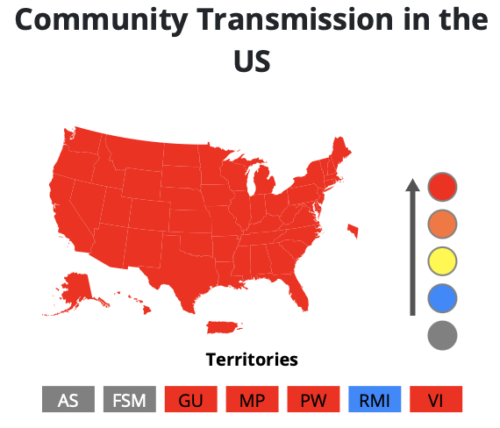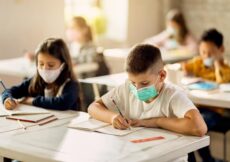February 10th, 2022
CDC COVID Data Tracker (updated 2/9/22)
Just as predicted and not a moment too soon, the winter Omicron surge is on its way out. Nationwide, new cases of COVID-19 and hospitalizations from the highly contagious infection have declined from record levels. Deaths have also started to level off: On Tuesday, 2,573 Americans died from COVID-19, up 9% on average compared to two weeks prior.
It’s still too soon to let down our guard in regard to preventing transmission of the virus. There is no debate that COVID vaccines and boosters are the strongest and most effective layer of protection we have against the pandemic virus — a fact that remains true despite several episodes of viral mutations and the emergence of new, more transmissible variants, like Omicron and Delta. The rapid influx of home testing over the last few weeks means people can now learn quickly when they are contagious and stay isolated from family members, friends, coworkers, schoolmates, and strangers. Maintaining a physical distance of at least 3 feet (6 feet is better) from people whose vaccine and health status are unknowable is another public health protection to reduce transmission. While transmission remains high in most areas (as the graphic above indicates, 99% of counties in the U.S. still have high rates of transmission), the CDC is warning Americans not to ease up right now on their mask guidelines, especially for school kids:
The agency “still recommends that all schools encourage students to wear well-fitting masks consistently and while indoors. And that’s consistent with our guidance that still also recommends that people mask in public indoor settings in areas of high or substantial transmission,” Dr. Rochelle Walensky said […]
“We owe it to our children to make sure that they can safely stay in school. Right now, that includes masking. We’ve seen outbreaks that have occurred in communities where students were not masked in schools and had to close,” Walensky said. “And much of our guidance is based on the amount of community transmission.”
States all around the country are beginning to relax their indoor mask mandates and restrictions, a move many public health experts believe is premature, says Nigel Chiwaya:
But according to data from the CDC, people in more than 3,200 counties — or 99 percent of the country — should be wearing masks regardless of their vaccination status. The CDC suggests wearing masks in places where the new case rate is higher than 50 cases per 100,000 or the testing positivity rate exceeds 8 percent.
Wearing masks in school has not been a pleasant experience for schoolchildren. While most kids appear to suck it up, do the best they can, and follow the rules (in contrast to some of the parents and grandparents who can’t be bothered with mandates and expert recommendations to be responsible and wear a mask in public), some have found their learning impaired as a result. Still, most kids and parents (and pediatricians, too) would agree that being in school and wearing a mask is far better than being forced to stay home and learn virtually. Asking kids to wear their masks a little bit longer isn’t too much to ask in order to keep them safe and allow them to stay in school. Besides, Jacqueline Howard reports, we’re almost there:
People should continue wearing masks indoors for a few more weeks, Dr. Paul Offit, director of the Vaccine Education Center at The Children’s Hospital in Philadelphia, said Tuesday. He added that although the Covid-19 situation is improving, cases and deaths remain high.
“Right now, we have about 90% population immunity, meaning people who have either been naturally infected or immunized or both — that’s good. We’re moving into the warmer climates — that’s good. This is really basically, at its heart, a winter virus. The numbers are way down from where they had been — that’s good. But you still had 150,000 cases yesterday and 1,000 deaths. That’s still a lot of cases and deaths,” Offit [said].
“So, what I would say is, independent of whether there’s mandates or not, I think people should reasonably wear masks when they’re indoors for the next few weeks, until we’re much farther down then where we are right now,” Offit said. “We’re almost there, if you could just hang in there for a few more weeks.”




































